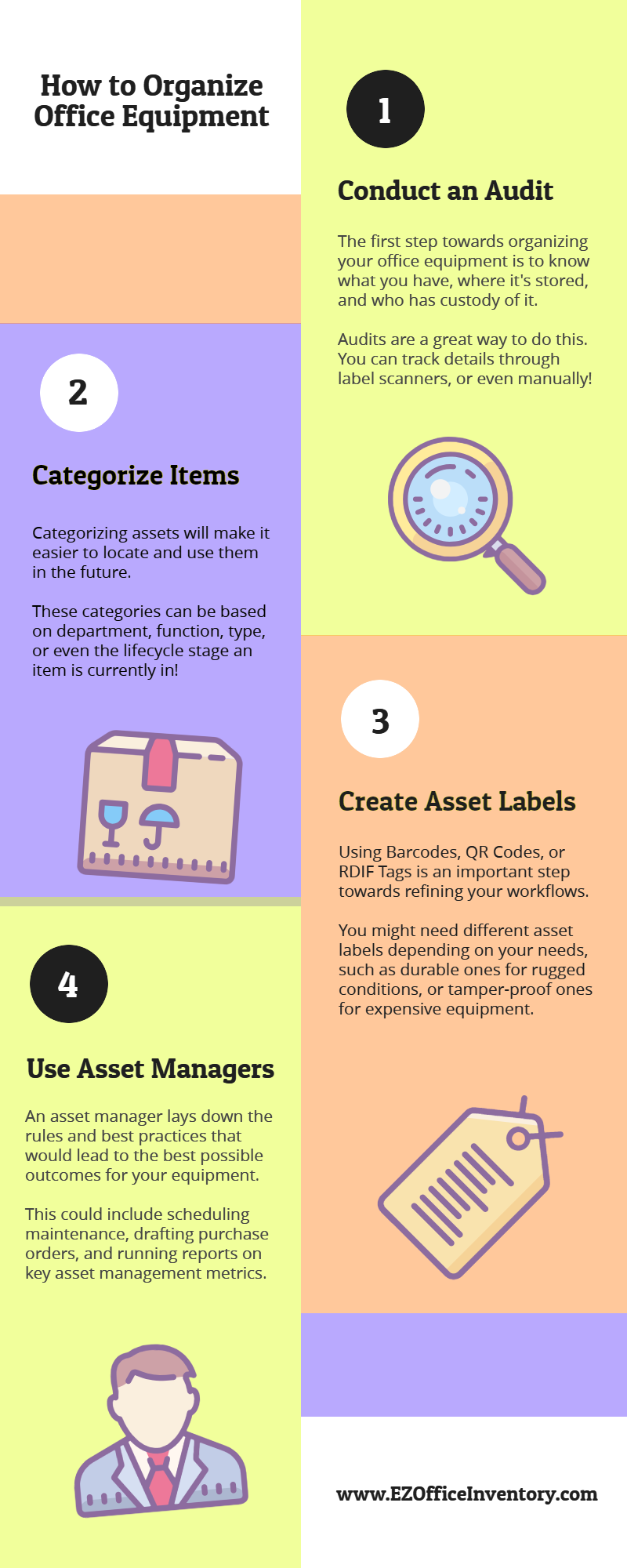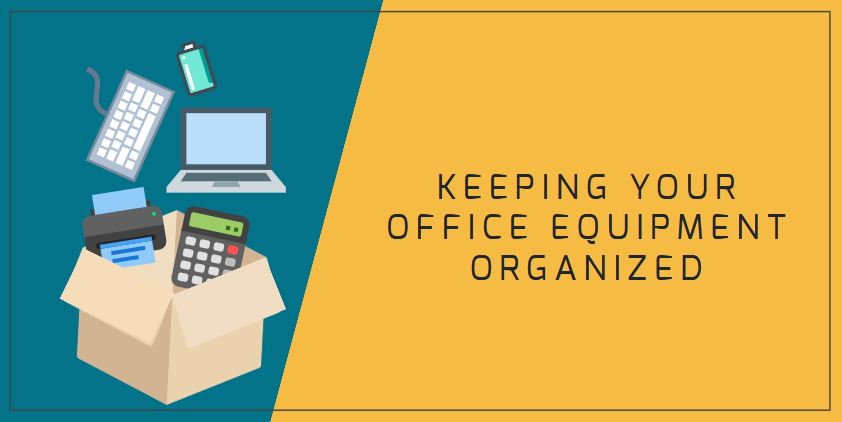What kind of business equipment do organizations use?
A lot of businesses design their own business equipment toolkits for daily tasks. To utilize equipment in an economical manner, it is crucial to list down the purpose of each asset. Every organization sets a budget for its inventory items. Depending on the demand and fluctuating market trends, firms decide to make certain capital investments. Here are a few common types of equipment and how they help streamline business workflows:
- Trucks for delivering goods: Companies that work with transporting items need a reliable transport system. In such cases, tracks, cars and vans can be used to deliver goods across locations for faster service.
- Analytics software for drafting reports: To assess their progress so far, firms often use different types of software to generate actionable reports. Often, they can also be used to present data to relevant parties.
- Furniture for office use: No company can operate without desks, tables and chairs. Basic office furniture provides employees an environment within which they can complete their daily tasks.
- Communication devices for connectivity: Employees are constantly in contact with vendors, clients or other businesses. Telephones, fax machines and mobile phones are commonly used for this purpose.
- Financial tools to ensure transparency: This includes financial calculators, computers, and financial software. Authorized tools allow companies to keep their finances in order in an efficient manner.

What are the benefits of well organized business equipment?
To reach higher levels of productivity, organizations should aim to keep their equipment organized. This can be done by implementing a robust management strategy which focuses on multiple aspects. From setting up procurement receipts to tracking depreciation for timely disposal, all such tasks can boost a company’s growth. The following benefits can be attained through streamlined organization:
- Gain competitive advantage: Procedures aiming to improve asset functions are likely to increase your rate of return. With tool warranties, manuals and receipts all recorded in a single place, you can check equipment in for all required service events and projects. Doing this accelerates business progress through improved asset work life.
- Improve stock control: Without a proper system of supply chain management, firms are likely to suffer from overstocking or shortages. But when you set minimum threshold levels before every new purchase order is created, you can achieve optimal inventory levels. This helps you cater to the business requirements without holding onto unnecessary assets. Having the right asset quantity frees up any tied finances the company might need otherwise.
- Achieve regulatory compliance: By generating value added reports all year round, you have access to accurate data on asset ownership. Information on the quantity of tools you have, when they were purchased and how they depreciate adds great insight to your compliance needs. A reliable database lets you keep up with the latest regulation updates as well.
- Enhance operational performance: To maximize utility from all your business equipment, it is necessary to schedule maintenance activities. Regular service activities let you cut down on large scale repair costs and prevent untimely breakdowns. Potential causes of failures can be identified before a serious malfunction takes place. Such measures raise operational efficiency of your workflows.
- Add insight to employee management: Constant tracking lets you observe the daily targets your employees achieve. This allows you to make sure your workers don’t become overtasked which will pull down their productivity. Usage history on all assets allows you to designate equipment which needs more training to be used in the correct manner.
Did you know? The average inventory accuracy threshold for retailers is only 63%.
How can you make your equipment more organized?
Seamless equipment management relies on keeping everything organized. Companies can follow the following steps to upgrade equipment organization at their workplace:
Conduct an audit
The first step towards organizing your office equipment is to know what you have, where it is stored, and under whose ownership it is. An easy way to do this is to conduct an audit.
For this, you can record all asset movements through a Barcode or a QR scanner. This can be done manually as well. Both procedures involve listing down equipment check-in and checkouts against a unique identification serial number. A valid audit requires you to follow these four steps:
- Figure out your method: When you start preparing for an audit, you outline all the data you will require. Then you figure out the best way to get access to that information. Depending on the nature of workflows, organizations tend to call employees or respective personnel to get certain details on assets. This can work for equipment checked out for off-site projects. A Barcode scanner can be used to account for tools lying around the office for an instantaneous stock update. For businesses operating at various regions, you can also email sublocations to ask for equipment records. Lastly, companies can also use an asset tracking software to verify current asset possessions.
- Carry out the audit: After collecting all relevant data, you can perform the audit. You conduct fieldwork and log the data gathered.
- Compile the data: After the audit, you are required to generate a report which basically complies all your results. Included in the report are the assets currently in use, mathematical errors and other discrepancies.
- Analyze the results: The final and most important step revolves around interpreting what you have so far. This means accounting for missing or lost assets in the financial statements. Designated department heads are also informed about the findings, and potential policy recommendations are discussed. While coming up with solutions, you should also reflect on how to organize better audits next time to cut down on unauthorized equipment usage.
Categorize your items
Assets can be divided into various categories subject to how a firm wants to utilize them. These subdivisions come in extremely handy to accomplish daily tasks without inconveniences:
- By location: For companies managing work operations at different locations, this type of categorization is an ideal option. Because of the frequent off-site use of assets, you need to list down tools according to their current positioning. An example of such a business could be the construction sector, where the majority of tasks happen to take place on job sites. For this reason, it is necessary to track where certain trawlers and excavators are at a certain time.
- By function: For use of access, firms sometimes want to bundle up equipment by their specific attributes. Under this distribution, assets can fall into various subdivisions like furniture, glassware, and lighting equipment. In order to handle all logistics successfully, firms which provide event management can make use of this categorization. With everything labelled and stored separately, it becomes easier to check out specific types of assets at the time of an event.
- By department: Each business comprises of many different departments. To provide seamless support to its clients, a telecommunication business could organize its equipment by these departmental classifications. Following this regime, the company would operate under the accounting, HR, marketing and other departments. Such an allotment works on the principle of specialization of labor and accelerates business progress.
- By Lifecycle: Not all assets have the same lifespan, and most tend to depreciate over different rates along the years. To cater to this, companies often tend to categorize equipment according to its lifecycle. For instance, hospitals deal with an inflow of medications every day. Some tablets need to be given out in a month’s time while some injections have a day’s expiry. To avoid inventory going to waste, healthcare organizations follow a strictly managed procurement routine for warehouse storage.
- By year of manufacturing: Tools come with the date of manufacture stamped on the back which help companies record them in their databases. This basically allows employees to check whenever a new upgrade is available. Often, this information can also be used to design the pricing strategy for various products. The automobile industry, for example, can use this classification to list cars.
Create asset labels:
When you decide how you want to categorize your equipment, the next step is to label assets with best practices in mind. Some assets are purchased for rigorous use while others tend to be transferred a lot across locations. This is why you might need different ways to label different assets. For example:
- Time sensitive inventory: Some assets are high upkeep. It might be helpful to track these through their procurement details. Recording such information n the label itself lets you manage depreciation and maintenance as well. While devaluation reports allow you to get replacements well within time so as to avoid costly upgrades. All of this information can be gleaned from an asset label.
- Diverse asset characteristics: Many companies deal with more than one project at a time. In such cases it helps to tag business equipment. Sometimes, different departments own similar assets and these tools can get mixed up if not labelled properly. It is also possible that assets might look the same but be used for separate purposes. This is where color coding comes in. Each product with a unique characteristic can qualify for a colored tag, such as all 16GB mobile devices having a green tag and all 8GB mobile devices having blue tags.
- High value goods: Since tagging itself incurs costs, businesses can decide to track only valuable assets worth the effort. To make good use of available resources, firms therefore create a benchmark for the minimum dollar value they will be willing to tag. This ensures that not every little tool would need to be labelled.
Hire an asset manager to take control:
A great tip is to make someone accountable for all asset management tasks at your organization. An asset manager lays down the rules and practices to be followed to gain the best possible outcomes for your equipment:
- Schedule maintenance sessions: To keep operations running smoothly, asset managers can check equipment in for regular maintenance events. Timely repair and service sessions take care of any potential failures and prolong the working life of tools.
- Run depreciation reports: It is recommended that asset managers track asset depreciation on a regular basis. Accounting for wear and tear lets you make arrangements for replacements so that you don’t suffer from stock shortages at any time.
- Record asset locations: Asset managements must keep track of equipment locations, especially items that are deployed for various projects across different regions. If you have tagged your assets, it becomes easier to list down where they are being taken. This can be done manually or through a check-in and checkout software.
- Implement a procurement routine: Managing inventory can be quite challenging if one is not reactive enough. Some assets tend to expire quickly and need to be replenished frequently. For this purpose, asset managers should devise a procurement program to generate purchase orders whenever the set minimum threshold for each item is reached.
The Next Step: Automated Equipment Management
We’ve discussed how companies can organize their office equipment by conducting audits, categorizing their data, using asset labels and appointing asset managers. To make their duties even simpler, asset managers can opt for a cloud-based asset management software.
Such software comes with features that automate daily business activities like scheduling maintenance and adding location updates. Data secured on the cloud keeps your information safe, and free from unauthorized usage. Equipment records are easily accessible to anyone with an internet connection, and the included mobile apps make it easy to update this data at any time of day. Using a software generally raises business uptime and provides a greater rate of return on equipment.
Learn more about us!
EZOfficeInventory is an office equipment tracking software that helps thousands of companies manage equipment workflows, lower costs, and optimize operations the world over.







